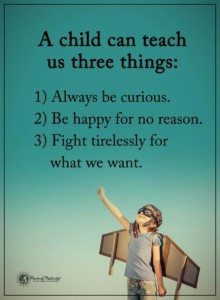Problem-solving is a learned skill. As parents, you hope that your kids grow into adults who can think come up with ideas and solve problems. Many parents wonder how they can instill these skills. So, what are 10 ways to teach your children problem solving skills for life?
The definition of problem solving
Problem-solving is when you see a problem and understand what’s causing it, and you choose the best solution for it and solve it.
The National Institute of Health says problem-solving, “Identifies problems, and uses logic, judgment, and data to evaluate alternatives and recommend solutions to achieve the desired organizational goal or outcome.”
Teach your children the seven steps to problem-solving
Problem-solving involves several steps. You can lead your child through these steps in hypothetical scenarios in everyday life. Then as they come up against their own problems at school or home, you can help them walk through the steps. This works for different ages.
- Figure out the problem. Talk about the problem with your child. (example: I can’t find my shoes)
- Come up with some solutions. Brainstorm potential ideas to solve the problem. (I look for them, I ask for help; I try to remember where I put them last)
- Think about the pluses and minuses of using different solutions.
- Choose one solution (I tried to remember where I put them)
- Test out your solution. (I couldn’t remember)
- Try a different solution if the first one doesn’t work (I asked for help)
- Solution (My brother found them under the kitchen table)
This process is something we have learned as adults, but these steps need to be taught to your child. Otherwise, she’ll stand in the hallway and scream, “I can’t find my shoes!” Giving your child the tools to figure out a problem will make them feel good that they can solve problems on their own.
Roleplay problem-solving scenarios with the kids
- You borrowed your brother’s favorite skateboard. While you’re using it, it breaks. What could you do?
- Your teacher is busy in class. You have a question, but she doesn’t see your hand. What could you do?
- Your friend is being really loud in the cafeteria. You can’t hear your other friend talk to you. What should you do?
- You finish all your work during math class. What should you do?
- Your friend is angry at you because you got a better grade on a test. What could you do?
Emotions and problem solving
Emotions are usually attached to problem solving. And often, before a problem can be solved, you need to understand your emotions. The same goes for your kids.
When your child is upset because they don’t understand a math problem, they need to know how they feel and what to do about it to better solve the problem.
This is especially helpful to young kids who are just learning to control their emotions, but these tips are helpful at any age.
- If you’re frustrated or angry because of a problem, find a way to calm yourself down. Try taking several deep breaths. Go to the bathroom. Just walking to the bathroom and back gives you a mental break.
- Think about why you feel so frustrated about this problem.
- Try to think of three ways you could solve the problem.
- Then think about what would happen if you picked each solution. How would other people feel? Is it fair, would it hurt someone else?
- Pick your solution and try it out. Did it work? Why or why not?
Critical thinking and problem solving
Another aspect of problem-solving uses critical thinking. Critical thinking is essential to a part of solving problems. Problem-solving and critical thinking both use knowledge, information, and data to solve problems.
It’s thinking on your feet, so to speak, and figuring out the problem and finding a solution. These two overlap a lot. They are equally important skills to teach your kids.
Encouraging your child’s critical thinking and problem-solving skills
1 – Stay close without hovering
Micromanaging your children to fix their problems is never a good idea. Don’t be overly ready to show them how to do things the correct way. It suffocates their own learning and ability to solve problems. Encourage their attempts, their persistence, and small accomplishments. Be specific, “I like how you came up with an idea to organize your socks.”
2 – Allow your child to solve their problems
You’re more experienced in life and you understand how to solve problems. But your child needs to learn this. You can solve their problems easily by telling them what to do, it’s actually faster than letting them figure it out. But it’s not helpful for good brain development.
Example:
Your 4-year-old must put on his winter coat before he can go outside to play in the snow. You could do it for him, but he needs to learn how to put it on by himself. Let him wrestle it out. He may get mad, but he’ll figure out a way to do it if he wants to play in the snow.
3 – Give your kids time to play
Playtimes are perfect for learning critical thinking and problem-solving. Young kids learn how to do things by themselves, how to solve problems with other kids, and what they enjoy. Pretending gives them creative outlets.
4 – Give your kids the room to learn and fail
Let them wrestle with their problems and think for themselves to discover solutions. Allow them to make connections. Try to not intervene right away. Let them fail at their attempts, then talk with them about the results.
5 – Ask your children thought-provoking questions
Help your children think through solutions and choices, Here are some excellent open-ended questions to get the conversation started.
- What’s happening?
- What do you think about it?
- Why?
- What would you do?
- Do you have ideas to share?
- What seems logical to you? Or What makes sense here?
- How could you fix it?
- What would you do if you could do it differently?
- What other things would work?
6 – Encourage their creativity
Allow them to experiment and try creative solutions. Encourage their creativity when they find a solution, even if it’s not the best solution. They’ll figure out soon enough why the solution doesn’t work. That’s okay because it’s part of the learning process we all go through of eliminating until we find the best solution.
7 – Teach your child to agree or disagree
This is an important critical learning skill for kids. It’s a learned skill to listen to other’s opinions when you don’t agree. Good manners come into play here. Teach them to listen to others and be able to share their opinion without anger or frustration. Part of life is learning to agree to disagree. Many things in life have several solutions, and it depends upon the person’s views as to what is most important.
8 – Teach your child to explain their answers
Ask your child, how do you know this? Why do you think this? Teach your child to defend their answers. Help them use evidence rather than feelings for their answers. Encourage them to think about where to get information to support their thoughts.
9 – Cause and effect
This helps your child come up with ideas, then test out their solutions. They’ll see what works and what doesn’t work.
Example:
Allow your child to plan when they’ll do their homework every day. Will it be right after school or in the evening? A week later, talk to them about how this idea has worked out. Did they get their homework done every day? What caused them to not homework finished?
10 – Working with others
Encourage your kids to work with others to solve a problem. Get them to talk to siblings, friends, or others to brainstorm ideas. Praise their willingness to collaborate and listen to other ideas. This critical learning skill emphasizes the importance of getting other’s ideas so they can better solve their problems.
Fun activities to enhance problem solving and creative thinking skills
Look at that cloud
This is an old game, but still lots of fun for kids and adults. On a sunny day, take your kids outside, tell your kids to look up at the sky and tell you what they think the clouds look like. Allow them to come up with different answers-a dog, a dinosaur, or a bunny. What is that animal or thing doing? This simple game teaches your kids abstract thinking skills.
Let’s make a silly meal
Look around the house. Find silly ingredients you could turn into a meal. The basket of socks could be a basket of bread. Or the red chair is pizza sauce. Let them run with their ideas after you give one or two examples. Have them “cook” their meal, then pretend to eat it. This little game teaches your kids to look at things in a different, out of the box way.
So, what do you think?
Ask your kids questions such as what do you think our dog thinks about all day? What do you think the sofa wishes she could do? What do you think that little boy across the street is thinking about?
Allow your child to come up with their answers. This helps them be creative and learn how to express their ideas.
Final thoughts on teaching problem solving skills your child will carry for life
Problem-solving is a learned skill. Your kids start problem-solving from a young age. When they’re little, they may need to solve simple problems like how to put on clothes and how to get the fork up to their mouth to eat.
As they get older, they’ll need to learn how to solve problems with other students or math problems. You can teach them problem-solving steps, especially how to deal with their emotions associated with solving some problems.
Helping them learn how to be good critical thinkers will help them solve problems and become successful in life.

















 Community
Community

